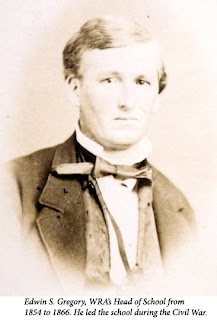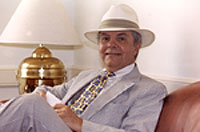 For the last several months, a major renovation has been going on at the historic Potwin Cottage on Hudson Street, probably the first total renovation in many years. An old marker that will likely be
For the last several months, a major renovation has been going on at the historic Potwin Cottage on Hudson Street, probably the first total renovation in many years. An old marker that will likely be  re-attached to the front of house proclaims that Professor Lemuel S. Potwin lived in the house from about 1873 until 1882 when he moved to Cleveland with the old college.
re-attached to the front of house proclaims that Professor Lemuel S. Potwin lived in the house from about 1873 until 1882 when he moved to Cleveland with the old college. Born in Connecticut in 1832 and a graduate of Yale College in 1854, Potwin went on to theology school, was ordained, served as a Pastor, teacher, and editor of the New England
 magazine before coming to Hudson in 1871 to teach Latin and also English language and literature. He and his wife, Julia, lived in this house during most of their time at Western Reserve College, and Professor Potwin wrote a number of books and articles while living here. He wrote widely about the New Testament, free will, and the pronunciation of Latin. When the college moved to Cleveland, the Potwins followed and the Professor continued teaching up to the time of his death in 1907. A selection of his essays and reviews was published by a Cleveland bookstore shortly after his death.
magazine before coming to Hudson in 1871 to teach Latin and also English language and literature. He and his wife, Julia, lived in this house during most of their time at Western Reserve College, and Professor Potwin wrote a number of books and articles while living here. He wrote widely about the New Testament, free will, and the pronunciation of Latin. When the college moved to Cleveland, the Potwins followed and the Professor continued teaching up to the time of his death in 1907. A selection of his essays and reviews was published by a Cleveland bookstore shortly after his death. Europe for what appears to have been a sabbatical of sorts. They sailed on a small luxury liner, the S.S. Mohawk, and spent the next fourteen months in Europe, returning in September, 1898. The couple kept a journal of their travels and made a pact that the surviving spouse would publish the journal after one of them died. So after Potwin's death, his widow Julia edited their journal and published it privately in 1911 under the title Fourteen Months Abroad.
Europe for what appears to have been a sabbatical of sorts. They sailed on a small luxury liner, the S.S. Mohawk, and spent the next fourteen months in Europe, returning in September, 1898. The couple kept a journal of their travels and made a pact that the surviving spouse would publish the journal after one of them died. So after Potwin's death, his widow Julia edited their journal and published it privately in 1911 under the title Fourteen Months Abroad. The house on Hudson Street was built around 1852 by the Kennedy family who sold it to the college several years later for use as a faculty residence. The house is Greek Revival in its basic design and originally had just one small wing off to the left which was raised to two stories in the early 1960's. Another addition was added to the rear of the house about the same time. When the college left the campus to the academy, our school continued to use the house as a faculty residence. So "dear old Professor Potwin", recalled by students of that era as being somewhat eccentric, has had his name attached to this delightful old house for more than 135 years.
The house on Hudson Street was built around 1852 by the Kennedy family who sold it to the college several years later for use as a faculty residence. The house is Greek Revival in its basic design and originally had just one small wing off to the left which was raised to two stories in the early 1960's. Another addition was added to the rear of the house about the same time. When the college left the campus to the academy, our school continued to use the house as a faculty residence. So "dear old Professor Potwin", recalled by students of that era as being somewhat eccentric, has had his name attached to this delightful old house for more than 135 years. 


























